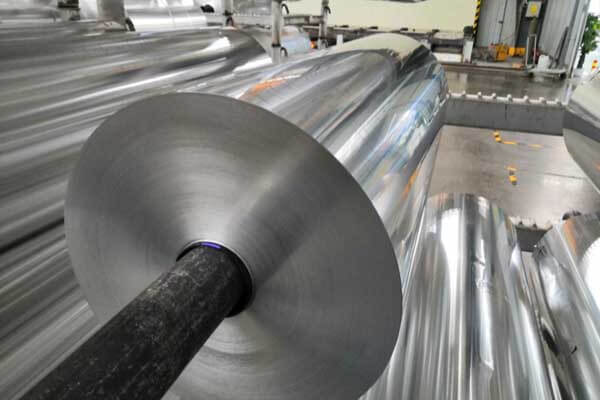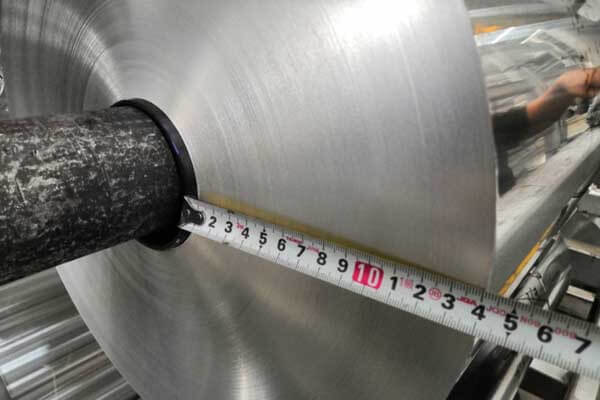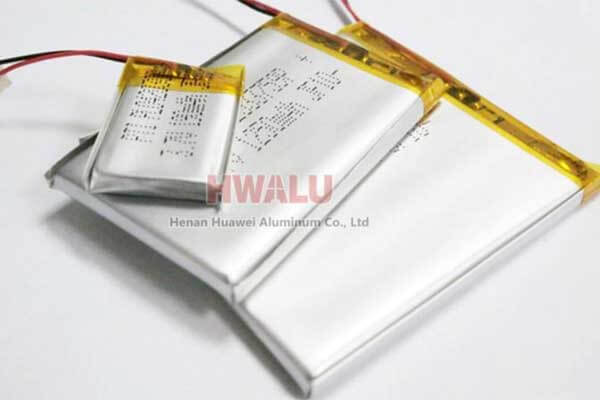Einführung
In der sich schnell entwickelnden Welt der Energiespeicherung, Aluminiumfolie ist ein wesentlicher Bestandteil bei der Herstellung von Batterien, insbesondere Lithium-Ionen-Batterien. Bei Huawei Aluminium, Wir sind auf die Herstellung hochwertiger Aluminiumfolien spezialisiert, die speziell für Batterieanwendungen entwickelt wurden. Unsere Produkte sind darauf ausgelegt, die Langlebigkeit zu erhöhen, Effizienz, und Leistung von Batterien, Wir beliefern ein breites Spektrum an Branchen, darunter auch die Automobilindustrie, Elektronik, und erneuerbare Energiesysteme.
 Batteriefolie aus Aluminium
Batteriefolie aus AluminiumWarum Aluminiumfolie für Batterien?
Aluminiumfolie dient als kritisches Material in der Batteriestruktur, Es fungiert hauptsächlich als Stromkollektor für die Kathode in Lithium-Ionen-Batterien. Seine inhärenten Eigenschaften, wie hohe Leitfähigkeit, Flexibilität, und Korrosionsbeständigkeit, machen es zur idealen Wahl für die Erleichterung eines effizienten Elektronenflusses, Verbesserung der Akkulaufzeit, und Verbesserung der Gesamtleistung.
Vorteile von Aluminiumfolie in Batterieanwendungen:
- Hohe Leitfähigkeit: Sorgt für einen effizienten Elektronenfluss innerhalb der Batterie.
- Leicht: Trägt zur Gesamtreduzierung des Batteriegewichts bei.
- Korrosionsbeständigkeit: Verbessert die Haltbarkeit und Akkulaufzeit.
- Flexibilität: Ermöglicht vielseitige Batteriedesigns und Formfaktoren.
Modelle und Spezifikationen aus Aluminiumfolienlegierungen
Bei Huawei Aluminium, Wir bieten eine Vielzahl von Modellen aus Aluminiumfolienlegierungen an, jeweils zugeschnitten auf die spezifischen Anforderungen der Batterieherstellung. Nachfolgend finden Sie eine detaillierte Tabelle mit unseren Primärlegierungsmodellen, deren Spezifikationen, und Anwendungen.
Tisch 1: Legierungsmodelle und Spezifikationen
| Legierungsmodell | Dicke (µm) | Breite (mm) | Anwendung | Merkmale |
|---|
| 1060 | 10 – 20 | 100 – 1500 | Standard-Li-Ionen-Akkus | Hohe Reinheit, hervorragende Leitfähigkeit |
| 1070 | 10 – 20 | 100 – 1500 | Lithium-Ionen-Akkus mit hoher Kapazität | Verbesserte Leitfähigkeit und Flexibilität |
| 1235 | 10 – 20 | 100 – 1500 | Unterhaltungselektronik | Gute Formbarkeit, Korrosionsbeständigkeit |
| 3003 | 10 – 20 | 100 – 1500 | Powerbanks, Elektrische Fahrzeuge | Höhere mechanische Festigkeit, hervorragende thermische Eigenschaften |
| 8011 | 10 – 20 | 100 – 1500 | Spezialbatterien (Hohe Temperatur.) | Optimale Wärmeleistung, Korrosionsbeständigkeit |
Anpassungsoptionen
Verständnis dafür, dass Batteriehersteller unterschiedliche Bedürfnisse haben, Huawei Aluminium bietet Individualisierungsmöglichkeiten für Aluminiumfolie, einschließlich, aber nicht beschränkt auf unterschiedliche Dicken, Breiten, und mechanische Eigenschaften. Unser Team arbeitet eng mit Kunden zusammen, um Lösungen zu entwickeln, die ihren spezifischen Anforderungen entsprechen, Gewährleistung optimaler Leistung und Kompatibilität mit ihren Batteriedesigns.
 Lithium-Ionen-Batteriefolie
Lithium-Ionen-BatteriefolieQualitätskontrolle und Standards
Qualität steht im Mittelpunkt unseres Handelns bei Huawei Aluminium. Unser Aluminiumfolie für die Batterieproduktion durchläuft strenge Test- und Qualitätskontrollprozesse, um sicherzustellen, dass es den höchsten Standards entspricht. Wir halten uns an internationale Qualitätsstandards, einschließlich ISO 9001, ASTM, und EN-Normen, Produkte zu liefern, denen unsere Kunden vertrauen können.
Testverfahren umfassen:
- Analyse der chemischen Zusammensetzung
- Prüfung der mechanischen Eigenschaften
- Überprüfung der Dicke und Breite
- Inspektion der Oberflächenqualität
Anwendungen von Aluminiumfolie in Batterien
Aluminiumfolie ist vielseitig und findet in verschiedenen Batterietypen Anwendung:
- Lithium-Ionen-Batterien: Die primäre Anwendung, wo es als Kathodenstromkollektor dient.
- Superkondensatoren: Wird in den Elektroden von Superkondensatoren zur Energiespeicherung verwendet.
- Flexible und tragbare Elektronik: Ideal für New-Age, flexible Batterieformate.
- Elektrische Fahrzeuge (Elektrofahrzeuge): Entscheidend bei der Herstellung von Elektrofahrzeugbatterien, Beitrag zu leichteren und effizienteren Batteriepacks.
 Aluminiumfolie für Batterie
Aluminiumfolie für BatterieNachhaltigkeit und Recycling
Huawei Aluminium setzt sich für Nachhaltigkeit und Umweltverantwortung ein. Aluminium ist in hohem Maße recycelbar, und wir befürworten und praktizieren Recyclingprozesse, die die Umweltauswirkungen unserer Produktionsabläufe reduzieren. Durch die Wahl von Aluminiumfolie für Batterien, Hersteller entscheiden sich nicht nur für ein Hochleistungsmaterial, sondern tragen auch zu einem nachhaltigeren und umweltfreundlicheren Produktionszyklus bei.
